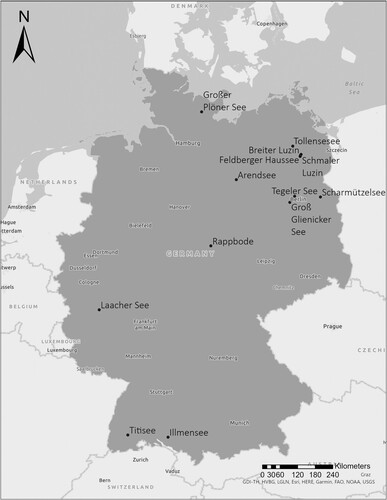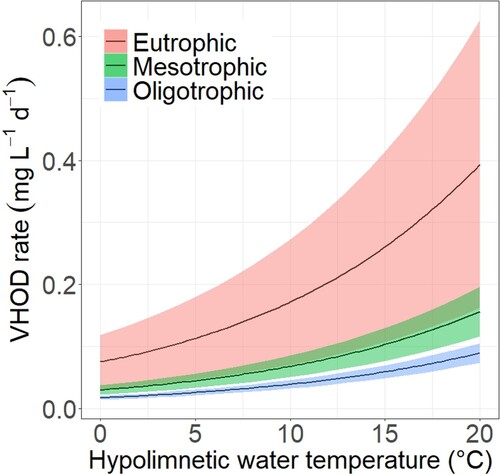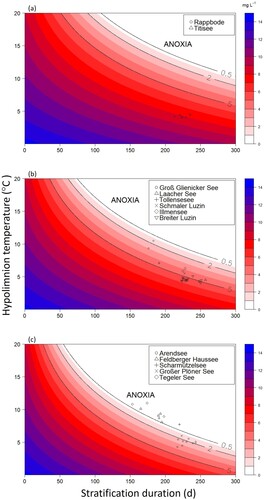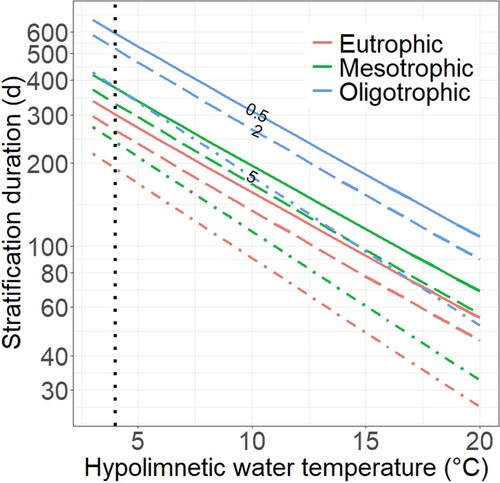Figures & data
Table 1. Empirical estimates of VHOD rates obtained from literature for corresponding lakes, years, and trophic status.
Table 2. Mean hypolimnion temperature, stratification duration, and model-based VHOD estimates in 13 German lakes.





